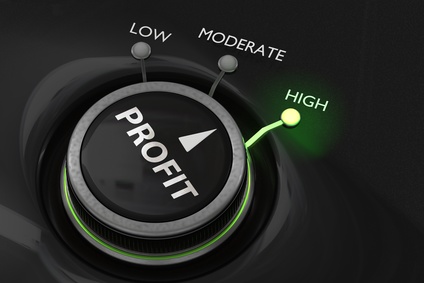Profitability - Maximising yours
How to Know if Your Business is Profitable (Without too much effort).

Recently I looked at the importance of the use of business intelligence. Business intelligence provides brilliant sales and marketing opportunities. This is because it makes it crystal clear where most of your business is coming from; how you’re doing at client retention and, crucially, the type of client that’s most profitable for you. And that’s the key point here.
The devil is in the detail
You may be landing lots of new business, but what’s it actually doing for your bottom line? Are you certain that your biggest spenders are actually buoying your profit margins? Or are they in actual fact draining your resources?
This is the thing about real time business intelligence: it tells it like it is. It shows you what’s going on in your business. Like whether your margins are profitable. Where you’re spending a lot but not getting much of a return. And that’s not all.
Why profit must become your best friend in business.
Without profit, a business cannot grow. It’s as simple as that. If you are merely covering expenses, what’s going to be left over? Nothing. Nothing to buy new equipment. Zilch to up your marketing game. Nada to expand your operation and take on new staff. Zero to finance product development.
Without profit, a business will stagnate and quickly lose market share to competitors. It is also very unlikely for an unprofitable business to be successful in obtaining finance to fund expansion.
How much time, effort and money do you plough into landing new business?
So, profit is lacking in your business. Obviously you need to attract more business. Or do you? Let’s think that over.
How much does it cost to land a new client? Marketing; proposal drafting; pitching; proposal re-drafting; second visit; travelling time; new client set-up; contract drafting and legal advice…
Wouldn’t it be better to develop the clients you already have with cross and upselling initiatives? Actually, let me rephrase that. Wouldn’t it be better to develop the clients you already have THAT ARE PROFITABLE?
Of course it would. So all you have to do now is work out which ones they are. Easy? Maybe not that easy.
Your biggest spenders are your most profitable clients, right?
This is something else I looked at briefly in the business intelligence article. It’s such a common assumption: a client is spending tonnes of money, so of course it must be profitable. But is it?
A client may appear profitable based on the cost of supplying products or services versus what you charge them. But have you factored in other costs? Have a quick look through these.
If you supply products, aside from manufacturing or purchase costs, are you factoring into the profit equation…
- Storage
- Packaging
- Shipping
- Order management time
- Customer service time
- Accounts and payment chasing time
- Promotional costs?
And if you are a service provider, aside from actual service delivery costs, have you considered…
- Pitching and proposal drafting time
- Client service time
- Project management time
- Contract drafting and legal expenses
- Accounts and payment chasing time
- Marketing costs?
It all adds up, especially the time element. Man hours are not free of charge. Even your own time comes at a cost, and that’s without staff salaries.
How to track ‘hidden’ outlay? Here’s the secret.
The secret to a profitable business lies in keeping track of costs. Not just upfront manufacturing or supply costs, but all those hidden expenses that eat into your bottom line. And do you want in on an even bigger secret? If you can monitor profitability throughout a project, assignment, job or contract rather than just seeing a final report once everything is done and dusted, then you’ll have the opportunity to make changes that will help nip leaking profits in the bud before they render the whole thing an unprofitable waste of time.
And here’s the solution.
We’ve ascertained that having business intelligence at your fingertips is essential if you’re going to be successful. And now you know that business intelligence is also essential if you’re going to be profitable. But how to pull all that vital data into one place so that you can analyse it, knowing it’s up to date to within a few minutes? Especially if that data takes on a host of formats courtesy of different departments using all sorts of different software and systems?
You need dashboards!
One of the most advantageous of dashboards is one which shows Theoretical Position. This dashboard displays current profit or loss based on captured financial information. Both project-specific AND client-specific, Theoretical Position delivers information of exceptional value. Detecting profit leaks becomes a straightforward task PLUS it’s possible to monitor unique client trends, which means you CAN see which of your clients are buoying your bottom line, and which are draining it.
You need a dashboard solution that is flexible and can ingest data from myriad sources.
Profit is vital in business. If you want to make sure your bottom line is resilient enough to support the growth of your business, you HAVE to know where you stand in terms of profit and loss. Fingertip insight makes that possible.
